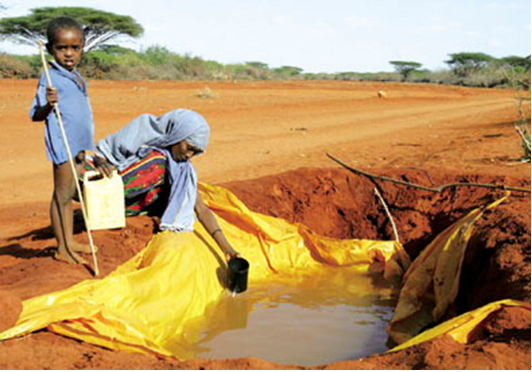Status quo of wastewater treatment in North Africa (Libya)
chinagate.cn, March 24, 2015 Adjust font size:

Beijing Municipal Research Institute of Environmental Protection and Tongji University recently issued Research report of Sino-Africa wastewater treatment cooperation, to analyze status quo of wastewater treatment and reuse in Africa.
Since 2008, Tongji University, with the coordination of United Nations Environment Programme (UNEP), has organized researchers to investigate wastewater treatment plants in African countries, involving Kenya, Zambia, Tanzania, Uganda, etc. Due to limitations of economy and technology, infrastructure of water supply and drainage in most African countries is relatively weak. Various factors for example the poor coverage of pipe network, outdated treatment facilities, aging equipment and plants, limited supply channels of treatment chemicals, lack of monitoring equipment for water quality, and unsatisfactory level of technicists and managers pose challenges to the development of wastewater treatment in Africa.
In some north African countries e.g. Libya, there is a strong requirement for wastewater reuse as a consequence of scarce water resources. In the town of Sirte, located adjacent to the Mediterranean Sea, sewage reuse is difficult since intrusion of sea water increases the salt content of water significantly. Investigation showed that the average value of total dissolved solids (TDS) in influent of sewage plant of Sirte is about 2,500 mg/L, and after treatment of grid, activated sludge, coagulation, sand filtration and disinfection, the effluent TDS average value is still at least 2300 mg/L. Before it can be reused, desalination of treated wastewater is an important and necessary step.
Based on local conditions of soil and climate, the designed volume capacity for sewage plant is 30,000 m3 per day, the scale of intended reuse demonstration project is 400 m3 per day, and the adopted technology is membrane treatment (ultrafiltration and reverse osmosis). Effluent could be used for irrigation with TDS of 600 mg/L. Besides TDS removal, this treatment process could remove other pollutants in water like heavy metals and organics with a high efficiency.

The wastewater treatment process in Sirte is shown in Figure 1.1; water quality of influent and effluent is in Table 1.1.
Table 1.1 Water quality of Sirte City Sewage Treatment Plant
|
Item |
unit |
SAMPLE 1 |
SAMPLE 3 |
|
TSS |
mg/L |
100-140 |
10-15 |
|
BOD5 |
mg/L |
125-260 |
3-25 |
|
CODcr |
mg/L |
200-420 |
15-40 |
|
TKN |
mg/L |
25-32 |
2.5-5 |
|
TP |
mg/L |
2.2-6.9 |
0.3-0.9 |
|
EC |
μs/cm |
3980-4680 |
3400-4480 |
|
TDS |
mg/L |
2000-3042 |
1600-3107 |
|
Total Hardness |
mg/L |
322-478.5 |
319-477.6 |
|
HCO3- |
mg/L |
217-311 |
132-279 |
|
Cl- |
mg/L |
816-996.6 |
704-910 |
|
SO42- |
mg/L |
620-687 |
569.9-589 |
|
NO3- |
mg/L |
2.13-6.4 |
8.64-14.4 |
|
Na+ |
mg/L |
354-512 |
334-499 |
|
K+ |
mg/L |
34.1-48 |
32.6-44 |
|
Ca2+ |
mg/L |
200-279.5 |
210-291.6 |
|
Mg2+ |
mg/L |
97.8-199 |
88.9-186 |
|
Zn2+ |
mg/L |
- |
0.34 |
|
Fe3+ |
mg/L |
- |
0.08 |
|
Cu2+ |
mg/L |
- |
0.01 |

